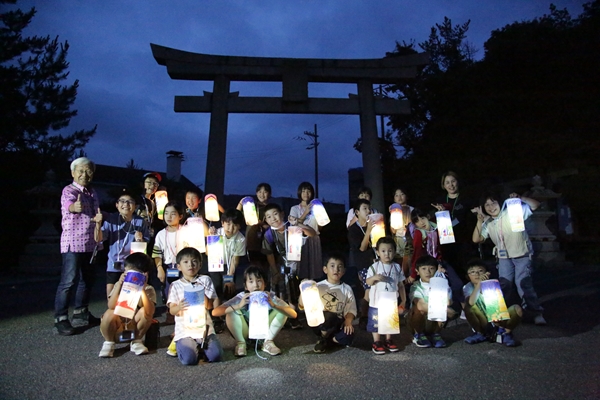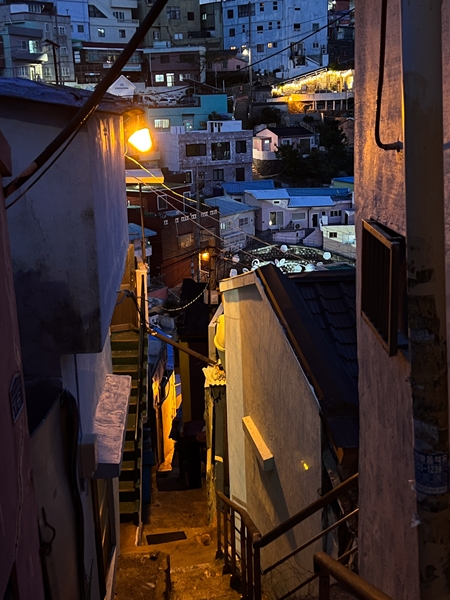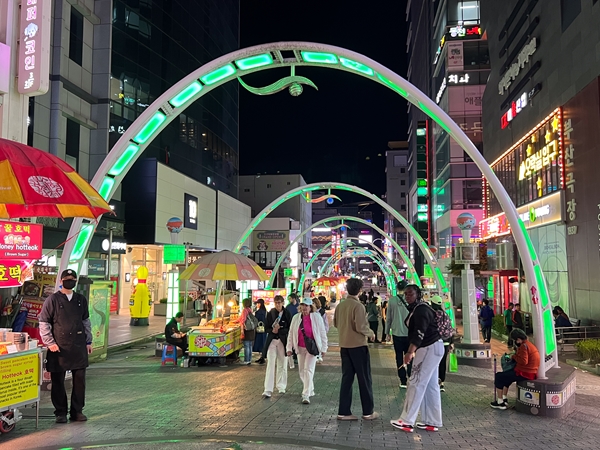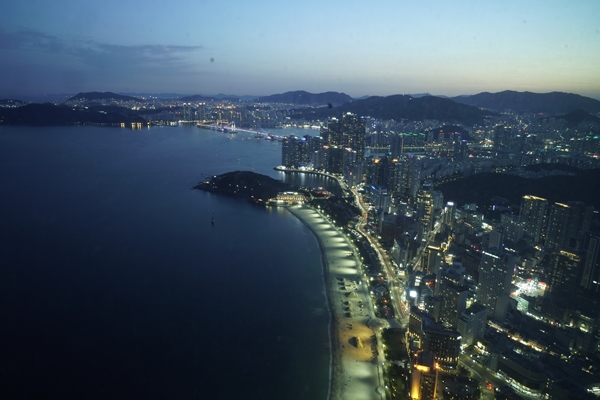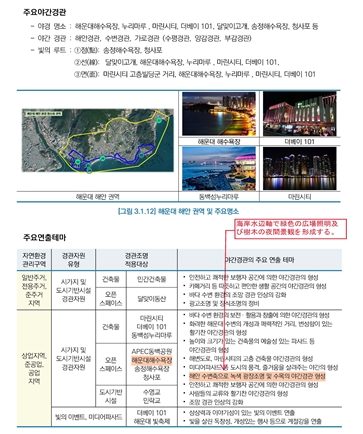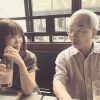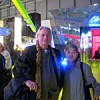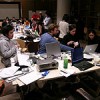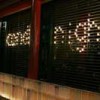Date of Issue: 23 August, 2024
・-Activity 1 / City Night Survey – Busan, South Korea(2024.05.16 – 05.19)
・-Activity 2 / Children Workshop in Omishima Island(2024.07.13)
City Night Survey: Busan, South Korea
2024.05.16 – 05.19 Mari Kubota+ Noriko Higashi
Busan, South Korea’s second-largest city, is one of the world’s major port cities. In recent years, it has also gained fame as a hub for tourism and film. We surveyed the lighting in Busan, which is also a member of LUCI (Lighting Urban Community International).
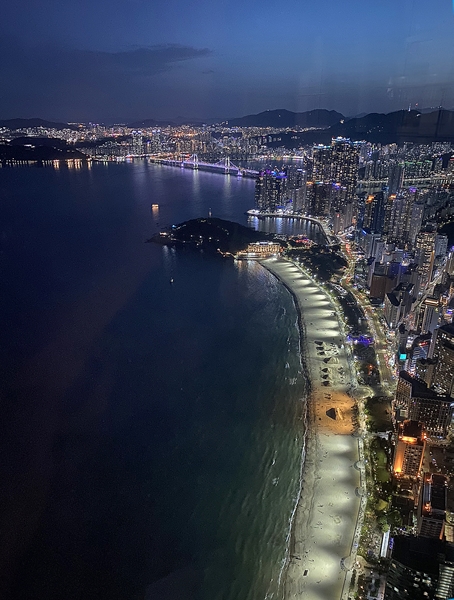
South Korea is a close neighbor, just 1.5 hours from Tokyo by plane, making it a popular destination for quick and affordable trips. Busan, the second-largest city in South Korea, is not only a tourist destination but also a major port and an entertainment center, hosting film festivals. As a member of LUCI, Busan has been focusing on urban lighting as part of its urban planning. In 2015, the city developed an extensive overview of its nightscapes, resulting in the Busan Urban Light Policy for 2030. This policy has been updated several times, reflecting the city’s ongoing efforts in implementation and improvement. The guidelines divide Busan into several zones, each with lighting tailored to its specific characteristics.
We traveled to Busan to assess whether the city’s lighting contributes to safety, beauty, attractiveness, and the local economy at night.
■Jagalchi Market
Jagalchi Market is South Korea’s largest seafood market, selling both fresh and dried fish. After purchasing seafood on the first floor, visitors can have it cooked and served on the second floor. The market attracts many tourists. White lights are used to illuminate the seafood, making it look as fresh as possible. It was surprising to see blue LED lights in the fish tanks—likely to enhance the appearance of the water.
The dry food section on the second floor was even brighter. Numerous strip lights hung from the ceiling, providing 8,000 lux to the food displays. Although extremely bright, the lighting wasn’t harsh because all the light sources were covered. Both floors were uniformly lit with bright white light, typical of a market environment.
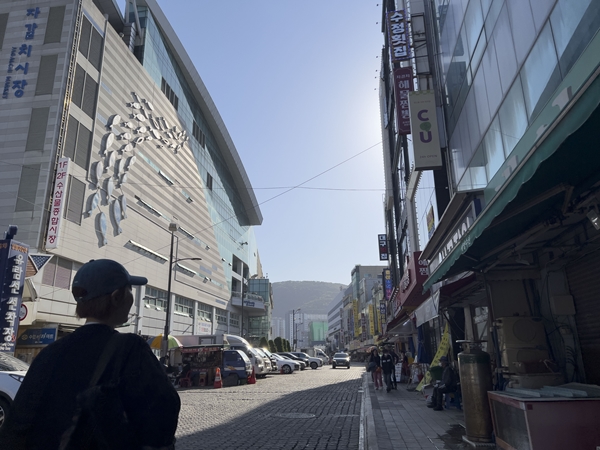
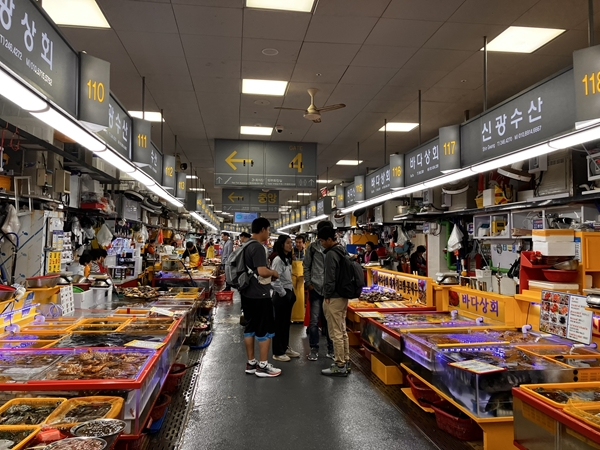
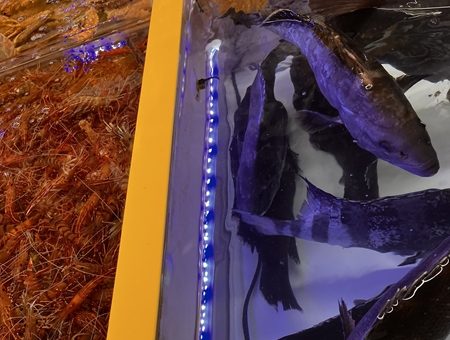
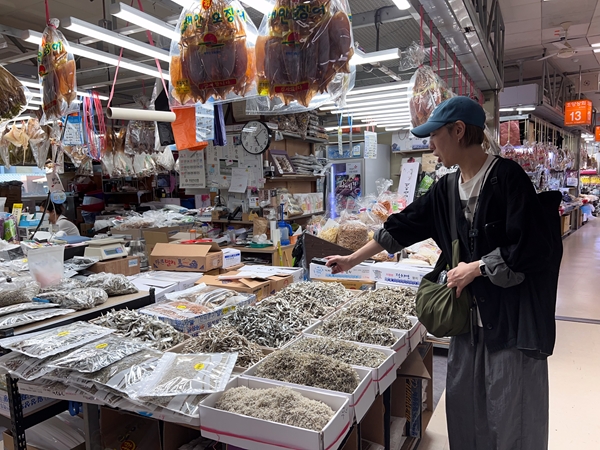
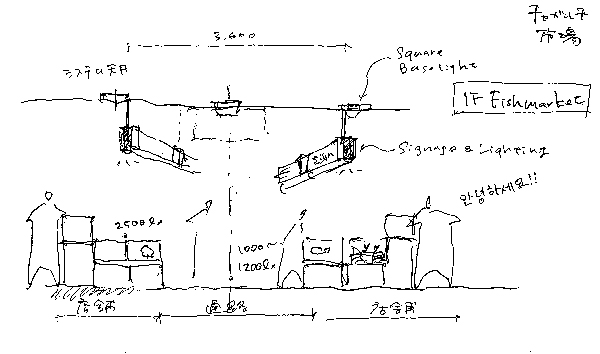
■Gamcheon Culture Village
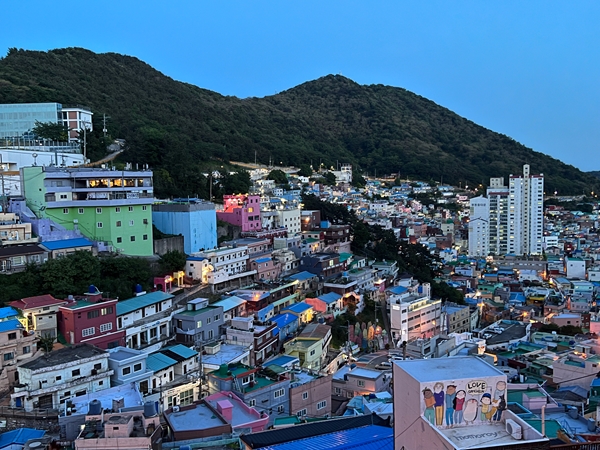
The Gamcheon area is a popular spot among tourists for its “Instagrammable” scenery, featuring low-rise, terraced housing complexes (similar to row houses) clustered haphazardly along the mountainside. The area underwent a public art-themed renovation, transforming it into a cultural hub. The LEGO-like buildings are painted in various colors, and public art and photo spots are scattered throughout the village. The twisted, labyrinth-like alleys can feel disorienting, but the redevelopment of this village has been a great success.
We chose this area for our first blue moment photo shoot. However, we noticed that there wasn’t any particularly well-designed lighting, likely because most tourists leave before nightfall. From a distance, the orange sodium lamps in the alleys, security lights attached to the corners of houses, and white streetlights create a unique nightscape on the layered terrain of Gamcheon. The narrow, pitch-dark alleys where houses are less than a meter apart require quite a bit of courage to walk. However, seeing the occasional warm-toned light poking out here and there offers a small sense of relief.
The nightscape, which has naturally emerged with the scent of human life, evokes a sense of nostalgia. If all the white lights were replaced with warm lights, the nightscape might look more cohesive. However, the randomness of the lighting could be contributing to the rhythm of this landscape. We did wish for the removal of some glaring streetlights, though.
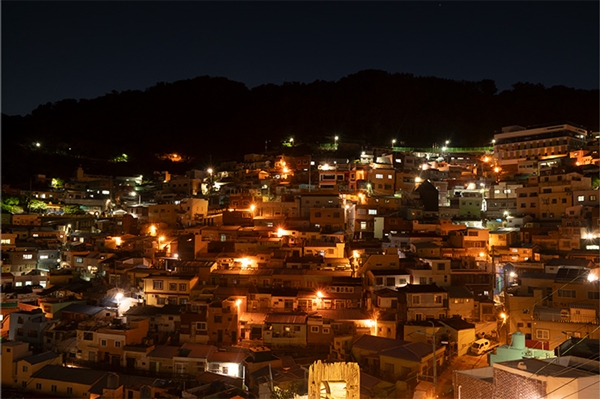
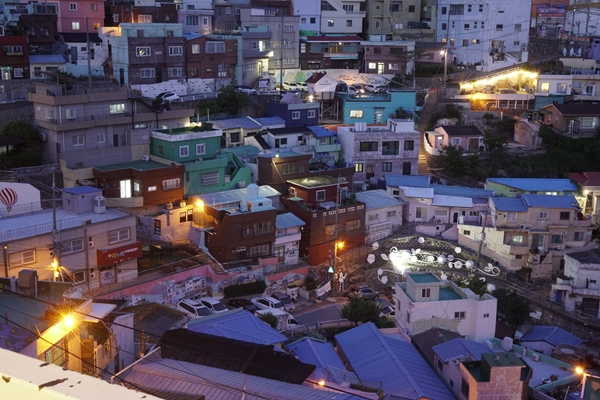
■Markets and Plazas
Busan has many fish markets. We surveyed Jagalchi Market, the International Market, Bupyeong Canton Market, and BIFF Square and its surrounding areas. These areas are designated as city centers, with historical and cultural importance under Busan’s nightscape guidelines. The lighting in this area has developed based on the theme of “light to enhance dignity.”
According to the Busan Metropolitan City Nightscape Guidelines, the lighting is designed to:
– Create a unique lightscape that enhances historical and cultural assets,
– Serve as the backbone of the urban axis, providing comfort and brightness to main roads,
– Allow pedestrians to enjoy the city’s vitality while feeling safe, secure, warm, and comfortable,
– Create a warm lighting environment with minimal glare,
– Consider the needs of residents in residential areas.
Although we studied these guidelines in Tokyo, we saw them widely reflected in the city.
The International Market, reminiscent of Tokyo’s Kappabashi, has 700 stores divided into six areas according to their products. Tools, clothing, food, electrical parts, and various other items are sold here, along with many restaurants. Each store brightly illuminates its merchandise, competing to attract customers. The food looks appealing under dazzling lights, accompanied by the sounds and smells of cooking and the energetic salespeople. The market is a melting pot of energy, and the abundance of light fixtures in the storefronts amplifies this vibrant atmosphere.
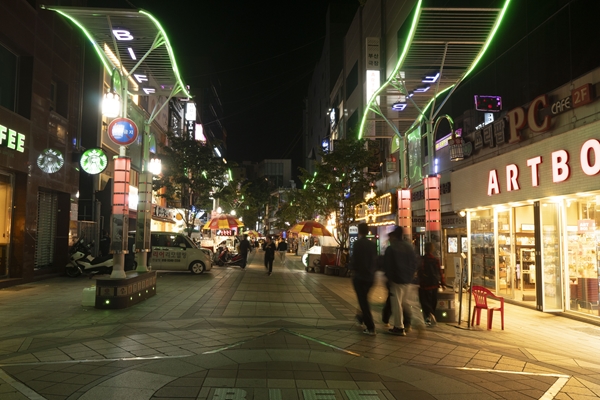
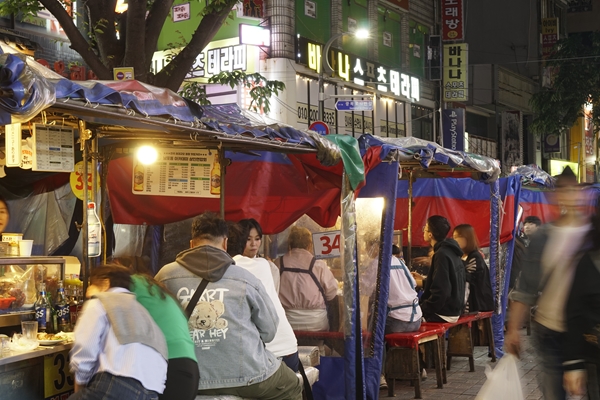
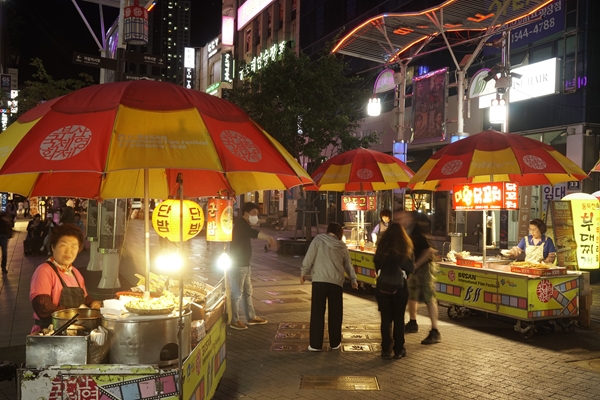
The International Market, Canton Market, and BIFF Plaza are all within easy walking distance of each other. At night, the Canton Market area is especially lively with food stalls, and BIFF Plaza is crowded with people browsing the food stands. The red and blue tent curtains of the food stalls, combined with the Korean characters on surrounding signboards, heightened our awareness of being in South Korea. The bare light bulbs hanging from the ceiling seem to act as a kind of guiding device, irresistibly drawing people in and preventing them from simply passing by the stalls. The power of light as a beacon is being fully demonstrated.
A series of arched, color-changing luminous gates to tenhance the excitement of the BIFF Plaza. This area was filled with sensory stimulation late into the night. This area was full of sensory stimulation until midnight.
These areas seem to have successfully created a nightscape where pedestrians can safely, securely, and comfortably enjoy their visit, just as the guidelines intended. Busan, where it’s enjoyable to walk around even at night and the lively atmosphere continues late into the evening, has become a destination worth visiting repeatedly. The city’s lighting plays a significant role in this appeal. (Noriko Higashi)
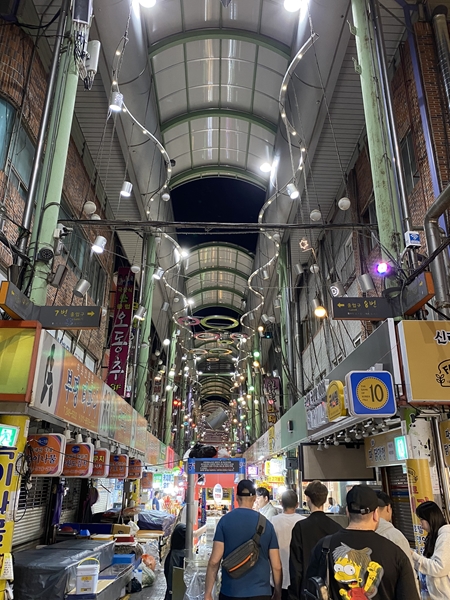
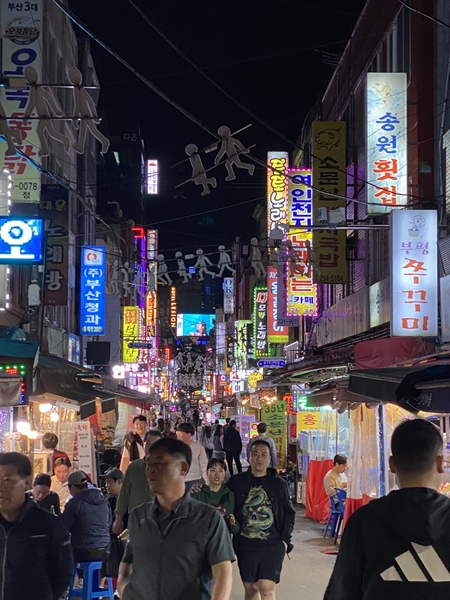
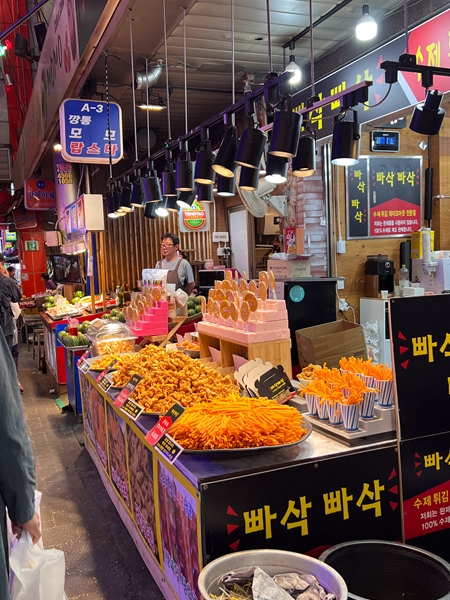
There’s an incredible number of spotlights!
Busan, South Korea’s second-largest city after Seoul, is the country’s largest port city. In addition to shipbuilding, port logistics, and fishing, Busan is also promoting the “Seven Bridges Landmark Project” as a global tourist city, centering on its seven coastal bridges and seven beaches.Among these, we surveyed the lighting environment around the two major beaches, “Haeundae” and “Gwangalli Beach,” and the “Gwangan Bridge” that connects them.
Haeundae, often featured in Korean dramas and films, is a sophisticated and fashionable area, popular among foreigners and young people. It features relatively new high-rise buildings. Gwangalli, on the other hand, is a favorite spot among locals, with low- and mid-rise commercial buildings lining the streets, bustling with a variety of music and traffic. Both beaches were crowded with visitors, enjoying the pleasant May weather and the weekend. We observed the nighttime lighting from various angles, including from the ground level, a high-rise observation deck, and a cruise ship around the bay, to see what kind of lighting attracts people to the beach.
■Haeundae
Haeundae Beach is about 1.8 km long and 50 to 60 meters wide. A promenade runs along the beach, where many people enjoy walking with their dogs in the mornings and evenings. The area features stylish food stalls, restaurants with terrace seating, and large hotels along the coastline.
Although South Korea is in the same time zone as Japan, the sun sets later in this season (near the summer solstice) compared to Tokyo. We waited for the sunset while relaxing on the beach with a light meal.
When the sun finally set, we were amazed at how brightly it illuminated the wide, sandy beach. Eleven-meter-high poles with three large floodlights each are installed every 40 meters along the promenade. The visibility is excellent, as we could clearly see footprints and whitecaps. While the lighting method seemed somewhat crude, it wasn’t particularly disturbing due to the distance between us and the light sources.
We’d been observing this lighting to see what time it would be turned off, but to our surprise, it remained at full brightness even at dawn. This seemed rather unusual, so we wondered if there used to be more of a theatrical element to it, like colored lights. Intrigued, I began to research the history of this lighting, struggling through Busan City’s Lighting Guidelines (2015) in Korean. Then, I found the phrase “green lighting for the square at Haeundae Beach” and, searching online, I came across images of the area illuminated in green light.
The green lighting was likely intended for entertainment rather than functionality. We’re unsure why it was replaced with white light, but it might have been due to aesthetic reasons, insect attraction, or a negative impact on marine life.
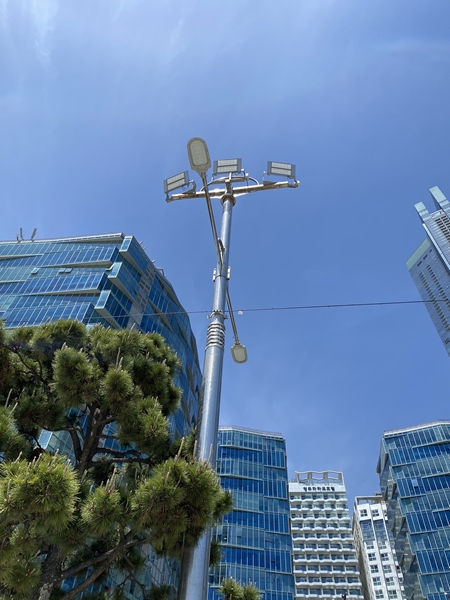
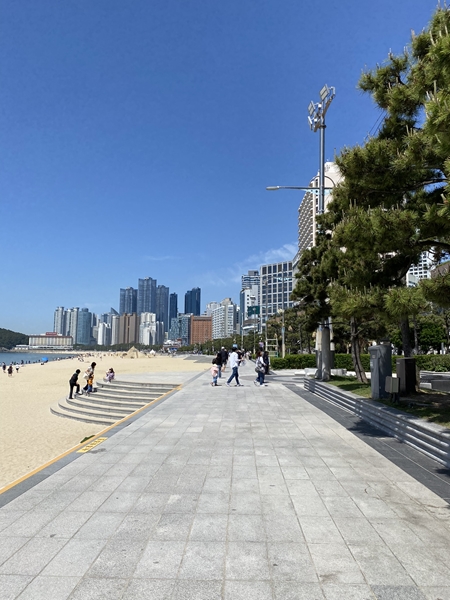
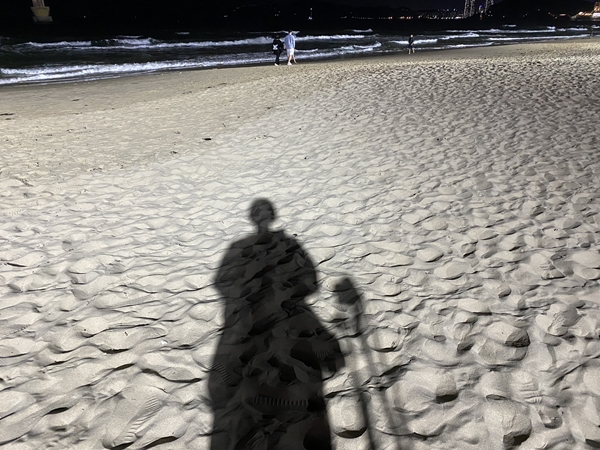
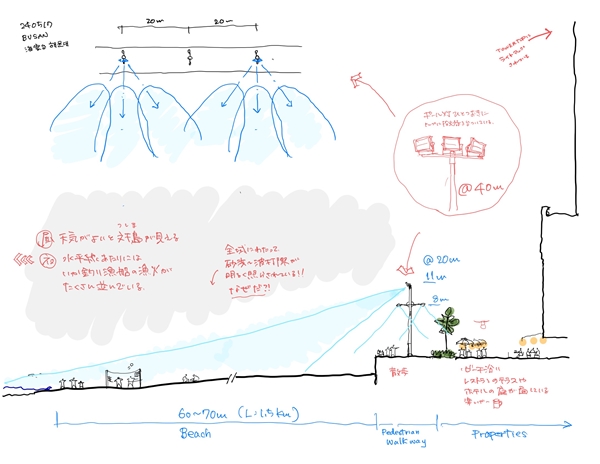
The promenade area, likely maintained by developers, features calm and warm lighting. Tivoli lights for the terrace seats and food stalls highlight the vibrant activity in the area.
As our eyes adjusted to the darkness further offshore, we noticed many dotted lights along the horizon, where there should be nothing. We had seen Tsushima Island in the distance during the day, so these lights were probably the fishing fires of squid boats. These lights made us feel connected to Japan from South Korea. Woohoo! (Refer to the Tsushima Fishing Fire Survey in 2022)
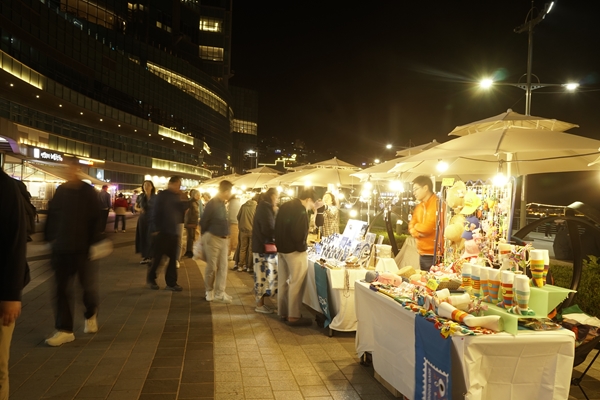
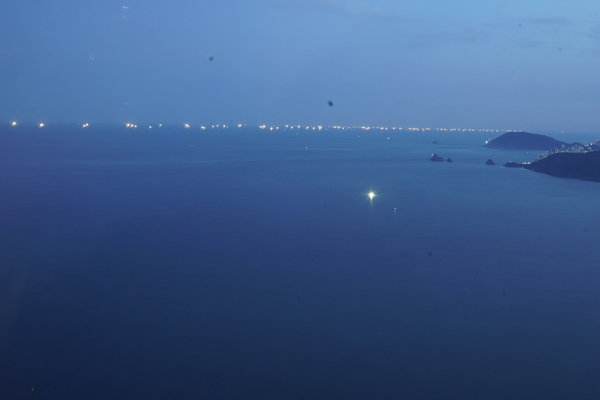
くコ: 彡
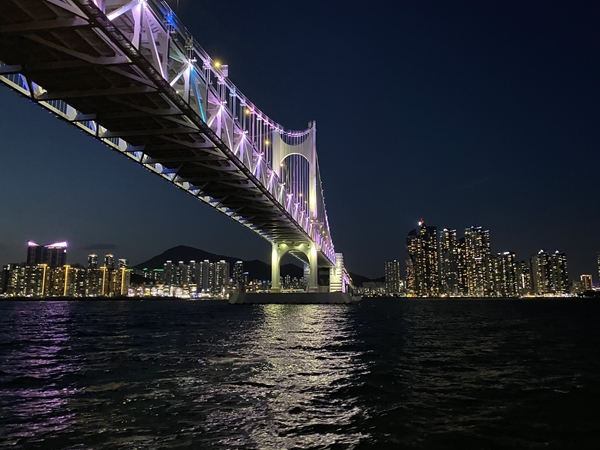
■Gwangalli
Gwangalli Beach, located next to Haeundae (although it’s quite a distance away—about a 30-minute drive, similar to the distance between Kasai and Odaiba in Tokyo Bay), was packed with cars and people on a Saturday night. In Busan, it seems to be standard for each tenant to have an internally illuminated sign on the inter-story space of the façade. While there were streetlights, the overall area was dominated by the light from the vertical surfaces of the buildings.
The headlights of the congested cars added to the bright and energetic atmosphere of the street, but the beach itself was not illuminated. Standing on the sand, I was surrounded by a bright, arc-shaped facade of buildings on the land side, and the illuminated Gwangandaebyo Bridge loomed directly ahead across the sea. The contrast between the dimly lit beach and the surrounding brightness was both pleasant and reassuring.


It’s quite uncommon to find a suspension bridge located just a kilometer from a beach. The suspension cables on the beach side were equipped with RGB LED dots, making the bridge a magnificent canvas of light.
On Saturday nights, a 10-minute light show featuring 600 drones lights up the night sky. The bridge’s lights are set to special performances before and after the show, and fireworks can also be seen offshore.The space was instantly transformed into a high-energy, entertainment venue.The light show is open to the public, drawing large crowds to the beach, and cruise ships gather on the sea to watch the show. The economic impact must be significant.
This time, the drone performance featured a two-dimensional dinosaur theme, apparently targeted at children. Drones, in general, must be costly to maintain and to create content, but we felt that content is more important than hardware, similar to media facades and projection mapping. Impressed by the fireworks, we headed off to downtown. (Mari Kubota)
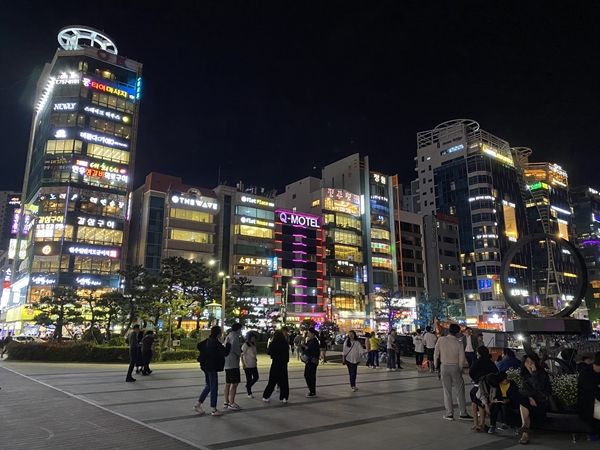
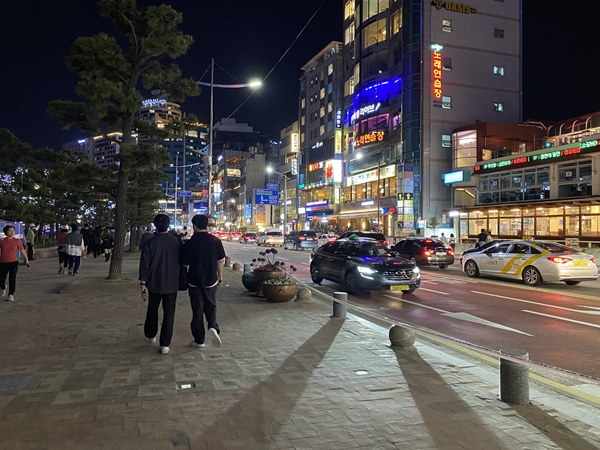
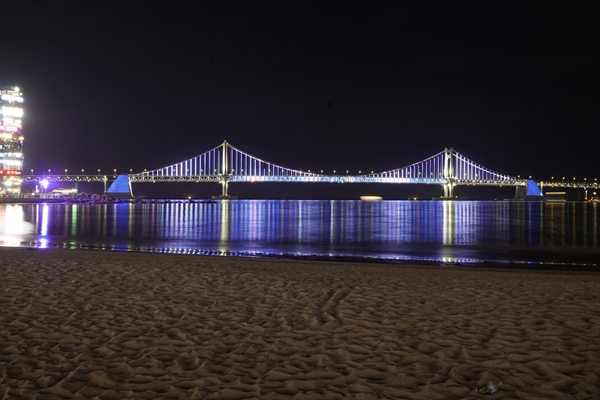
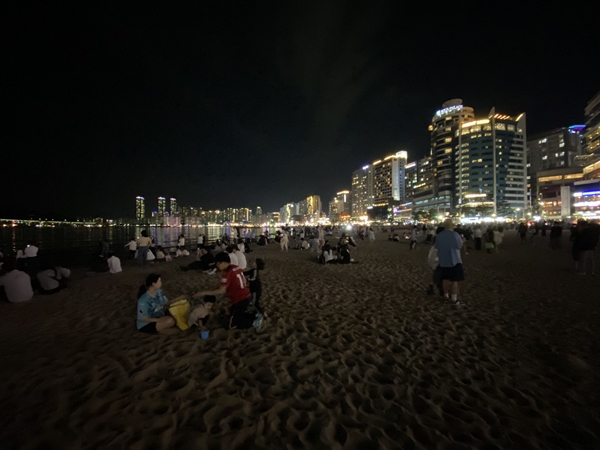
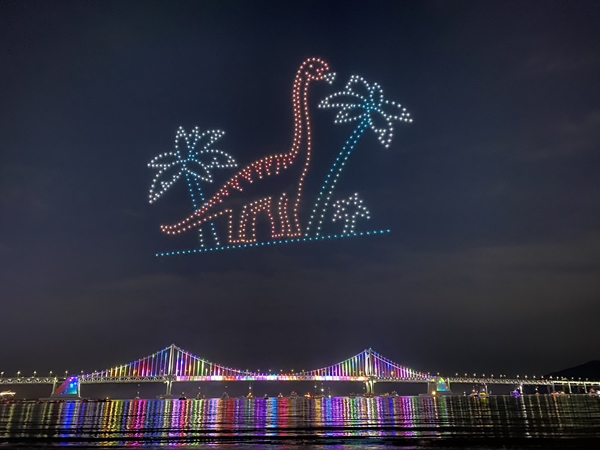
Children’s Workshop in Omishima Island
“Let’s light up the way to the shrine!” Collaborated with Ito Architectural Sudio.
2024.07.13 Noriko Higashi
We are invited by Ito Achitecutral Studio and held a children workshop in Omishima Island, Ehime Prefecture. We thought about how we could make the approach at night a beautiful and comfortable space with the children.

A children’s workshop of the Ito Juku, which is led by architect Toyo Ito, was held in Omishima, Ehime Prefecture. Mr. Mende and I participated in the workshop as instructors. The theme was “Let’s light up the way to the shrine!” Before the Seto-Ohhashi Bridge was opened, the sole means of transportation to Omishima was by boat. Consequently, the pathway connecting the port to Oyamazumi Shrine on the island used to be very busy. Nowadays, visitors cross the bridge by car and park their cars in the parking lot next to the shrine, so the approach to the shrine is rarely visited and became sparsely populated and quiet. Various efforts are being made to revive the bustle of the approach to the shrine, and this children workshop was one of them.
15 elementary school students from Imabari City joined this workshop and some children came from the neighborhoods, while others rode the bus from outside the island.
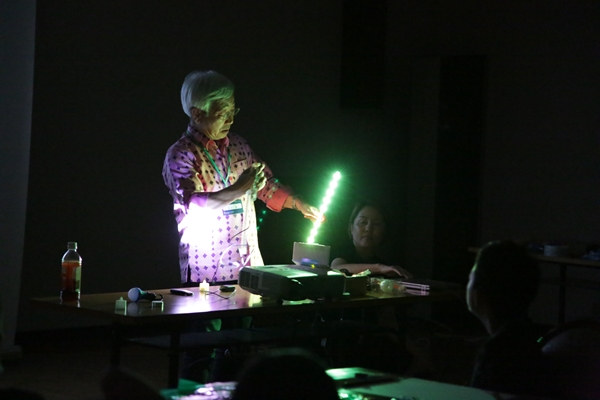
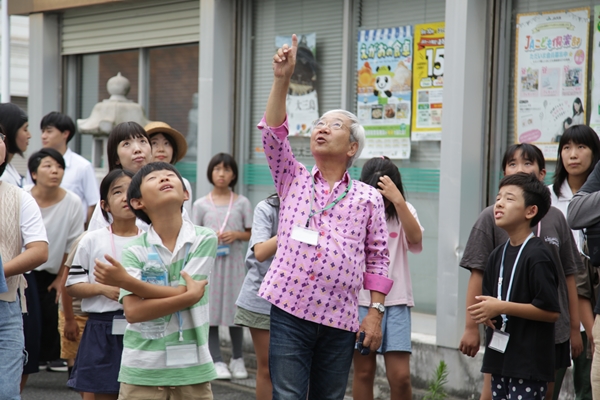
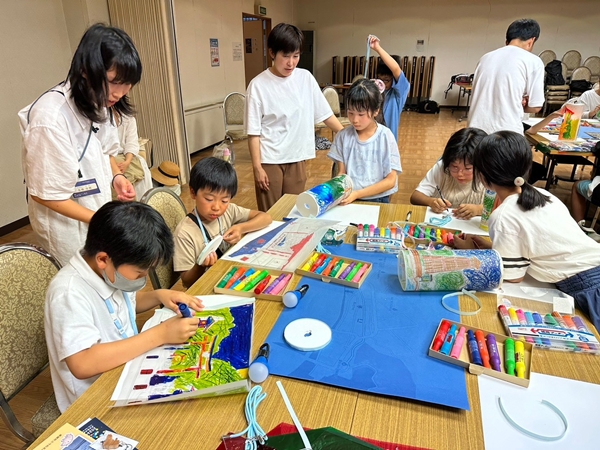
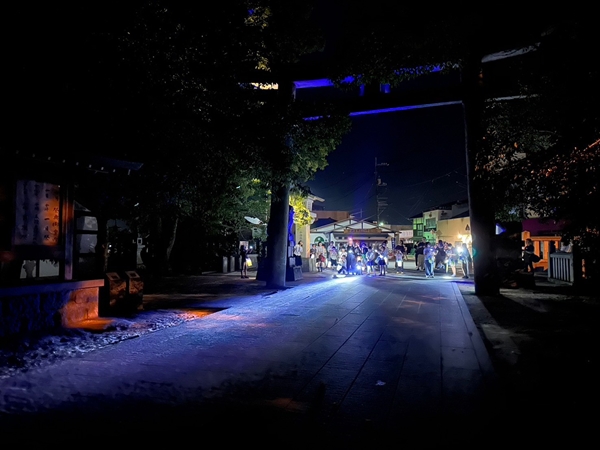
First, Mr. Mende explained what lighting can do and what kind of light sources are available. He also darkened the room and had the participants look at actual light sources and their effects.
Then, we walked along the approach in the daytime and observed landmarks there to think about how to illuminate them at night and how they could make the approach pleasant.
Back at the community center where the workshop was held, children chose one of the landmarks they wanted to light up and decided on a design for the light. The landmarks were printed on thick tracing paper, and the children painted the landmarks in the colors they wanted to illuminate, and eventually they turned into hand-held lanterns. Although it is a simple coloring paper, the children were very particular about the way they painted the landmarks and the colors they used, and contrary to our expectation that the coloring would be completed in a short time, it took a lot of time.
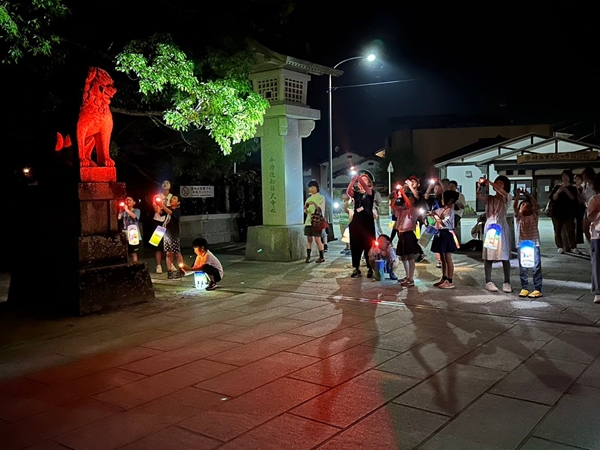
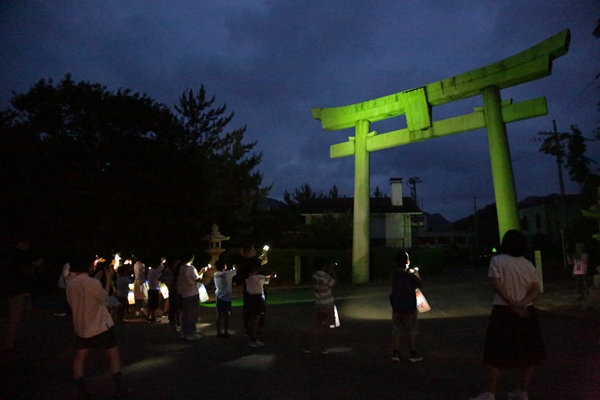
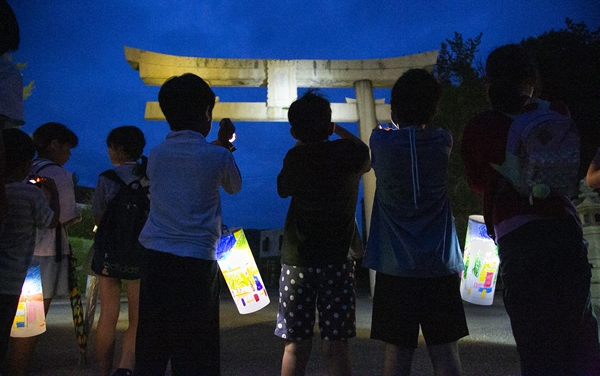
Once the lanterns were completed, it was time to go live with the lights, flashlights, and red, blue, green, and orange filters. We illuminated the Ichino-Torii (First Torii Gate), the approach gate, Minna-no-ie (House for all), the fire watchtower, and the Otorii (Grand Torii Gate) with flashlights. The children experienced that some things should be illuminated while others should not, and that changing the color and intensity of the light gave a very different impression.
We hope that this experience of light will stay in their minds and encourage them to further explore the nighttime landscape. (Noriko Higashi)
Photo : Kaako Yoshino
